
Pi Day is an annual celebration of the mathematical constant π (pi). Pi Day is observed on March 14 since 3, 1, and 4 are the first three significant figures of π, and it was first celebrated in the United States. It was founded in 1988 by Larry Shaw, an employee of a science museum in San Francisco, the Exploratorium. Celebrations often involve eating pie or holding pi recitation competitions. In 2009, the United States House of Representatives supported the designation of Pi Day. UNESCO's 40th General Conference designated Pi Day as the International Day of Mathematics in November 2019.

A berry is a small, pulpy, and often edible fruit. Typically, berries are juicy, rounded, brightly colored, sweet, sour or tart, and do not have a stone or pit, although many pips or seeds may be present. Common examples of berries in the culinary sense are strawberries, raspberries, blueberries, blackberries, white currants, blackcurrants, and redcurrants. In Britain, soft fruit is a horticultural term for such fruits.
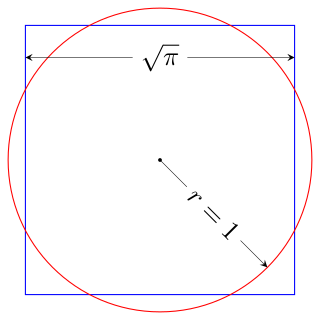
Squaring the circle is a problem in geometry first proposed in Greek mathematics. It is the challenge of constructing a square with the area of a given circle by using only a finite number of steps with a compass and straightedge. The difficulty of the problem raised the question of whether specified axioms of Euclidean geometry concerning the existence of lines and circles implied the existence of such a square.
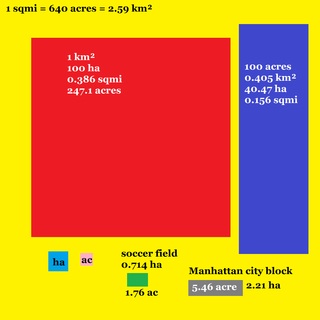
This page is a progressive and labelled list of the SI area orders of magnitude, with certain examples appended to some list objects.
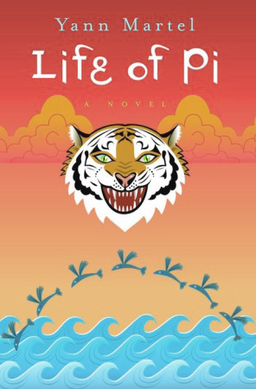
Life of Pi is a Canadian philosophical novel by Yann Martel published in 2001. The protagonist is Piscine Molitor "Pi" Patel, an Indian boy from Pondicherry, India, who explores issues of spirituality and metaphysics from an early age. After a shipwreck, he survives 227 days while stranded on a lifeboat in the Pacific Ocean with a Bengal tiger, raising questions about the nature of reality and how it is perceived and told.
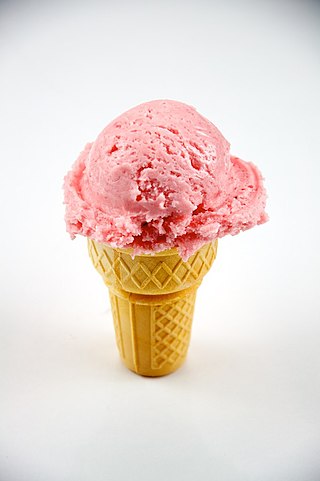
An ice cream cone or poke (Ireland/Scotland) is a brittle, cone-shaped pastry, usually made of a wafer similar in texture to a waffle, made so ice cream can be carried and eaten without a bowl or spoon, for example, the Hong Kong–style bubble cone. Many styles of cones are made, including pretzel cones, sugar-coated and chocolate-coated cones. The term ice cream cone can also refer, informally, to the cone with one or more scoops of ice cream on top.

The zucchini, courgette or baby marrow is a summer squash, a vining herbaceous plant whose fruit are harvested when their immature seeds and epicarp (rind) are still soft and edible. It is closely related, but not identical, to the marrow; its fruit may be called marrow when mature.
Popular mathematics is mathematical presentation aimed at a general audience. Sometimes this is in the form of books which require no mathematical background and in other cases it is in the form of expository articles written by professional mathematicians to reach out to others working in different areas.

Cookie dough is an uncooked blend of cookie ingredients. While cookie dough is normally intended to be baked into individual cookies before eating, edible cookie dough is made to be eaten as is, and usually is made without eggs to make it safer for human consumption.

Alexander Soifer is a Russian-born American mathematician and mathematics author. His works include over 400 articles and 13 books.

Cake decorating is the art of decorating a cake for special occasions such as birthdays, weddings, baby showers, national or religious holidays, or as a promotional item.
Profile Books is a British independent book publishing firm founded in 1996. It publishes non-fiction subjects including history, biography, memoir, politics, current affairs, travel and popular science.

Yann Martel, is a Canadian author who wrote the Man Booker Prize–winning novel Life of Pi, an international bestseller published in more than 50 territories. It has sold more than 12 million copies worldwide and spent more than a year on the bestseller lists of the New York Times and The Globe and Mail, among many other best-selling lists. Life of Pi was adapted for a movie directed by Ang Lee, garnering four Oscars including Best Director and winning the Golden Globe Award for Best Original Score.
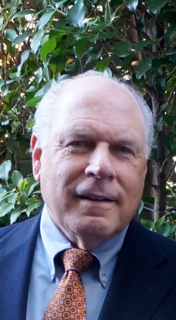
Alfred S. Posamentier is an American educator and a lead commentator on American math and science education, regularly contributing to The New York Times and other news publications. He has created original math and science curricula, emphasized the need for increased math and science funding, promulgated criteria by which to select math and science educators, advocated the importance of involving parents in K-12 math and science education, and provided myriad curricular solutions for teaching critical thinking in math.

Christina Tosi is an American chef and cookbook author. She is founder and co-owner with Momofuku of Milk Bar and serves as its chef and chief executive officer. Food & Wine magazine included her in their 2014 list of "Most Innovative Women in Food and Drink".

Hamid Naderi Yeganeh is an Iranian mathematical artist and digital artist. He is known for using mathematical formulas to create drawings of real-life objects, intricate and symmetrical illustrations, animations, fractals and tessellations. Naderi Yeganeh uses mathematics as the main tool to create artworks. Therefore, his artworks can be totally described by mathematical concepts. Mathematical concepts he uses in his work include trigonometric functions, exponential function, Fibonacci sequence, sawtooth wave, etc.
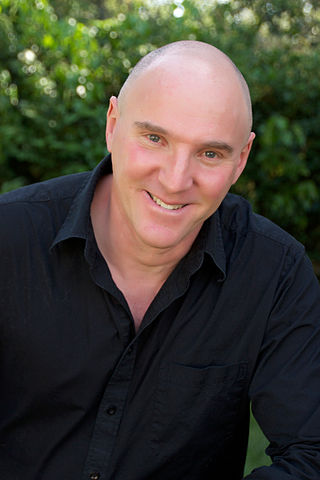
Amir Alexander is a historian, author, and academic who studies the interconnections between mathematics and its cultural and historical setting.

Eugenia Loh-Gene Cheng is a British mathematician, educator and concert pianist. Her mathematical interests include higher category theory, and as a pianist she specialises in lieder and art song. She is also known for explaining mathematics to non-mathematicians to combat math phobia, often using analogies with food and baking. Cheng is a scientist-in-residence at the School of the Art Institute of Chicago.
Fangcheng is the title of the eighth chapter of the Chinese mathematical classic Jiuzhang suanshu composed by several generations of scholars who flourished during the period from the 10th to the 2nd century BC. This text is one of the earliest surviving mathematical texts from China. Several historians of Chinese mathematics have observed that the term fangcheng is not easy to translate exactly. However, as a first approximation it has been translated as "rectangular arrays" or "square arrays". The term is also used to refer to a particular procedure for solving a certain class of problems discussed in Chapter 8 of The Nine Chapters book.

Beyond Infinity : An Expedition to the Outer Limits of Mathematics is a popular mathematics book by Eugenia Cheng centered on concepts of infinity. It was published by Basic Books and by Profile Books in 2017, and in a paperback edition in 2018. It was shortlisted for the 2017 Royal Society Insight Investment Science Book Prize.

















